Epsom salt also called magnesium sulfate is a popular supplement for people who grow plants or have gardens as it increases the health and development of plants. This article examines in detail the correct ratio of Epsom salt per gallon of water to use for best results. One can increase nutrient absorption by understanding and applying this natural mineral correctly, improve flower blossoming and make leaves healthier. Whether you’re an amateur gardener or an expert plant breeder, this manual has got vital lessons and handy hints that will enable you to derive maximum Epsom salt benefits for your plants.
How to Use Epsom Salt for Plants?
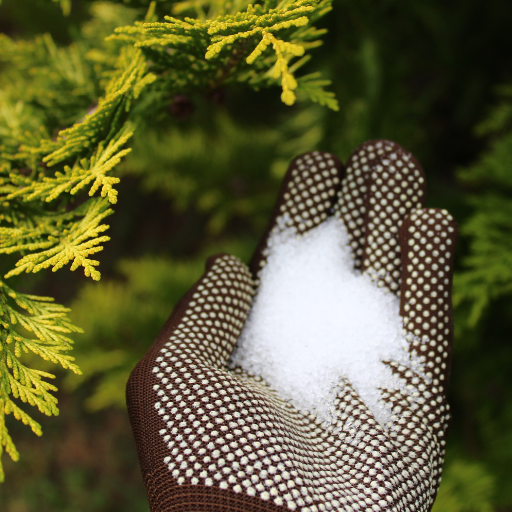
In order to use Epsom salt for plants, dissolve 1 to 2 tablespoons of Epsom salt into a gallon of water. You can use this solution to water your plants once every month. For outdoor plants, you may sprinkle the Epsom salts directly around the base of the plant at a rate of 1 tablespoon per foot of height; then water extensively. In terms of indoor plants, one should use this diluted solution to prevent any potential accumulation of salts in soils. This method is meant to guarantee that plants receive enough magnesium and sulfur which are important nutrients for healthy growth and vibrant foliage.
Why should one consider using epsom salts on plants?
The reasons behind usage of Epsom salt on plants are diverse. Firstly, it acts as a readily available source of magnesium which is essential in photosynthesis and chlorophyll production leading to greener and healthier leaves. Also, it helps improve absorption of nutrient thus making it easier for the plants to take up necessary nutrients such as nitrogen and phosphorus. Furthermore, it also increases germination rates among seeds as well as encourage more compact bushier growths in plants . It also helps in preventing diseases and pests in plants by boosting their health. Regular application may lead to more vibrant flower blossoms and increased productivity.
How often do you put epsom salts on your plants?
The frequency with which Epsom salts are used on vegetation relies on what kind of plant and its specific requirements. A monthly dose is sufficient for general purpose applications involving an Epsom salt solution being sprayed within the garden or lawn at least once every thirty days. Dilute 1-2 tbsp eposm salt in one gallon water and use it for watering the crops.For outdoor gardening activities, there’s need for direct application where we sprinkle around our plant one spoonful full each feet high from its stem together with thorough watering afterwards.An indoor gardener must make sure that the solution has been diluted as this helps in avoiding salt accumulation in the soil. Bear in mind that excessive use of these substances will result in nutrient imbalance; hence, it is important to observe these rules for better plant health.
Can epsom salts be overused in gardening?
Yes! Over using Epsom salts in gardening can harm plants. Excessive application can lead to a build-up of magnesium within the soil which may interfere with absorption of other essential nutrients such as calcium and potassium. A nutrient imbalance that leads to slow growth and probably makes plants deficient in some nutrients. Therefore, use Epsom salts sparingly and apply them according to recommended rates so as not to have its adverse effects on crops.
How Much Epsom Salt Per Gallon of Water?
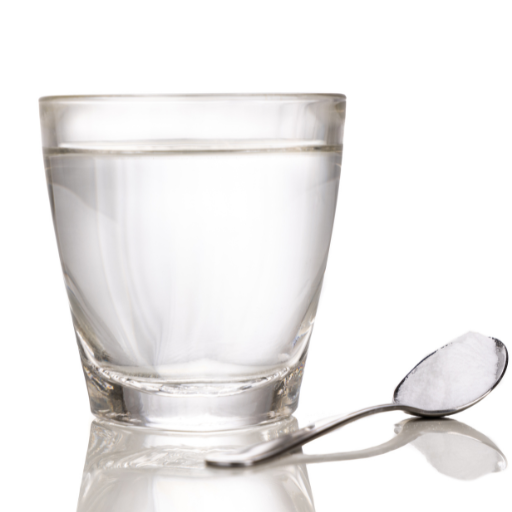
Normally, you should apply one to two tablespoons of Epsom salt for each gallon of water. This strength is useful for various plants and reasons like stimulating healthy green parts, facilitating nutrient absorption and sprouting seeds. However, it is essential that you follow specific guidelines based on the kind of plant involved in order to avoid over-application leading to nutrient imbalances. Be sure to dissolve the Epsom salts completely before applying them so as to ensure uniform distribution and optimum benefits.
What amount of epsom salt would I add per gallon?
For most garden plants, apply 1-2 tablespoons of Epsom salt per gallon of water. The objective here is to ensure that plants receive sufficient magnesium and sulphur, which are crucial for proper plant growth. For household plants, maintain the same concentration (1-2 tablespoons per gallon), but apply it less frequently (about once a month) so as not to accumulate salts in the soil. There could be variations between different plants in such situations; for instance, tomatoes might benefit from dilute solutions applied straight into the soil. Always make certain that you dissolve your Epsom salt thoroughly in water before use because this will help enhance even application ensuring maximum effectiveness.
How do you measure one tablespoon of epsom salt?
One tablespoon can be measured using a regular teaspoon used in cooking. Making sure that it’s levelled off with enable accurate measurements. Approximately 15 grams or 0.53 ounces equals one tablespoonfuls or teaspoonsfuls respectively when dealing with Epsom salts. If you want more precise measurements especially if they are in grams or ounces better use a digital kitchen scale set at zero mark by turning on then press units button until g appears on the screen turn off or clear button then press unit button again until oz comes up on display again turn off/clear . Into your spoon scoop out some Epsom salts and scrape off any excess using either your finger, or the flat side of a knife, or any other straight edge. With this technique you are guaranteed an accurate and consistent measurement every time.
Technical Parameters:
- Standard Tablespoon Measurement: 1 tablespoon = 15 grams or 0.53 ounces.
- Accuracy: Use a digital kitchen scale to precisely measure grams or ounces.
- Leveling: Use a flat-edged tool to level off the tablespoon for consistency.
Does the amount of Epsom salt differ for different kinds of plants?
- Tomatoes usually do well with a solution having 1 tablespoon Epsom salt per foot tall plant applied directly to soil every 2 weeks because tomatoes require more magnesium and sulfur during fruiting.
- Rose plants on the other hand may require a reduced solution such as one tablespoon per gallon applied monthly through sprinkling of leaves or direct pouring on soil so as to encourage fresh blooms and greener foliage.
- For peppers, however, you might need to use a solution of about one tablespoon in a gallon of water sprayed onto foliage biweekly. This is necessary because it helps in preventing blossom-end rot while enhancing general growth rate.
These measurements and frequencies guarantee that plants obtain enough magnesium and sulfur required for optimum growth and development. Always dissolve the Epsom salt completely in water to ensure uniformity and effectiveness when using it.
How to Use Epsom Salt on Different Plants
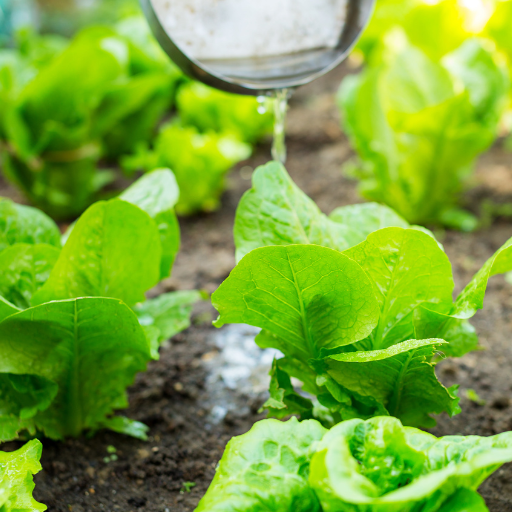
Different plants can be treated with Epsom salt by identifying specific nutrient requirements of each plant. Tomatoes should be given 1 tablespoon of Epsom salt per foot of plant height, applied to the soil every two weeks when fruiting in order to increase magnesium and sulphur levels. A bit more diluted solution of 1 tablespoon per gallon of water, which is then foliar sprayed or directly applied on the ground once a month, is used for roses to enhance blooms and foliage’s health. For peppers, dissolve epsom salt in water at a rate of one tablespoon per gallon and apply as a foliar spray every two weeks to prevent blossom end rot plus improve overall growth. To make sure that the Epsom salts are evenly distributed throughout the growing medium it must be completely dissolved in water.
Is Epsom Salt Good for Tomato Plants?
Yes! Really, using this substance may have positive impact on tomato crops. It contains essential elements such as magnesium and sulfur which are very important in plant development processes. Magnesium assists tomato plants photosynthesize due to production of chlorophyll while Sulfur aids in enzyme and vitamin formation. Used correctly it will help to prevent yellowing leaves and generally improve the wellbeing of tomato growers’ crop production yield.The problem arises if you apply too much fertilizer.
How Can You Use Epsom Salt for Roses?
If you want to use Epsom salt for roses then start by mixing 1 tablespoon of Epsom salt with each gallon of water. Ideally this should be a monthly application either through spraying or direct application to the soil surface channelled through a seeping tube system called ‘soaker hoses’. Blooms quantity is increased due to improved magnesium level inside rose flowers combined with overall plant vigor as well as root strength which comes from rapid cell division at meristem point where roots grow from.Additionally, alkaline soils can also cause magnesium deficiency which shows up as yellowing between leaf veins. The solution must be mixed thoroughly in order to achieve the desired evenness throughout the area of application.
What Are the Benefits of Epsom Salt for Potted Plants?
In essence, Epsom salt has a lot of beneficial information for potted plants. Magnesium helps in uptaking nutrients like phosphorus and nitrogen that are important for plant growth and development. Moreover, chlorophyll production is facilitated by it which is necessary for photosynthesis leading to greening. Furthermore, sulfur enhances the synthesis of proteins and enzymes as well as contributes to cell division in plants. They can also cure common problems such as leaves turning yellow or slowing down in size. If applied properly, Epsom salt could increase overall health, floral production and root strength for containerized crops.
How to Apply Epsom Salt on Plants?

Before you decide to use Epsom salts on your plants, first it is necessary to establish if you are addressing a particular nutrient deficiency or looking at enhancing overall growth. Most plants require 1 tablespoon of Epsom salt in one gallon of water as foliar spray applied directly onto the leaves. Use this method for fast nutrient uptake. Mix similar proportions for soil application and water your plants once every month so as to support their roots. As for potted plants, put some several tablespoons around its base then water heavily. Follow all recommended guidelines and avoid using excess amounts, which may have negative effects on the health of these organisms.
Does epsom salts go straight into the soil?
The direct application of Epsom salts to the soil can be helpful with caution only being exercised in such processes. Magnesium and sulfur, necessary elements that enhance plant’s health, are among the vital nutrients found in Epsom salts. Nevertheless, adherence to suggested recommendations is crucial; otherwise much usage result into nutrient imbalances or accumulation of salts within the soil. In general, dissolving Epsom salts in water before applying them helps ensure they are dispersed evenly thus minimizing chances of adverse reactions occurring on crop surfaces. To apply on soils, use about 1 tablespoonful for one gallon container of water and repeat this process once monthly for improved welfare of vegetation like cactus. Always monitor your plants so that you can know when they need more or less usage.
Should I dilute epsom salts with water?
Diluting Epsom salts before applying is generally encouraged due to various reasons. Firstly, magnesium and sulfur which are major nutrients provided by epsom salt will be distributed evenly after being diluted thereby preventing possibility of having too much nutrients that could harm crops involved as it might lead to excessive nourishment by minerals from this source (Clemson University Cooperative Extension Home & Garden Information Center). For spray applications and root drenches, a common suggestion is to dissolve one tablespoon of Epsom salt in a gallon of water (Rodale Inc, 2010). This mixture should be applied once a month to avoid excessive salts in the soil. Technical parameters include the concentration of the solution, which is 1 tablespoon per gallon (approximately 15 grams per 3.78 liters). This concentration has been tested and found to have both safe and effective for routine use under proper supervision. Always observe your plants for any signs of stress and adjust the frequency of application if necessary.
How do I apply epsom salt as foliar spray?
To make an epsom salt foliar spray first you need to prepare a solution by dissolving 1 table spoon or about 15g of Epsom salt in one gallon (3.78 L) of water. Ensure that all the crystals are dissolved completely so as to prevent nozzle clogging during application. Pour this into either a clean spray bottle or garden sprayer that you present for this purpose only. Watering schedule: Apply early morning when leaves are still wet with dew or late afternoon after sun when it is going down towards dusk (Salinero et al., 2006). Evenly spray on leaves without run-off over them ensuring complete cover-up. Apply this once every month within vegetative stage and monitor aftermaths in order to readjust according to their responses as soon as something looks wrong with them like low nutrient content or leaves turning yellow on plants.
Is Epsom Salt Good for All Types of Plants?
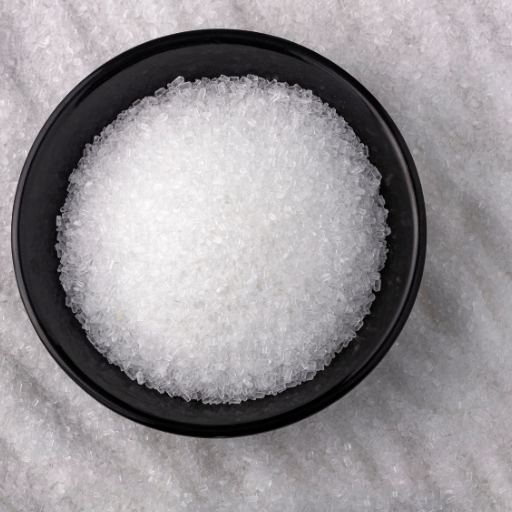
It is not all plants that Epsom salt will be good for, but it can be used by many. For instance, some of the plants that are often short of magnesium such as tomatoes, peppers and roses do benefit from the application of Epsom salt. However, there may not always be a need to add extra magnesium or sulfur in certain crops like well balanced soil which might show no noticeable improvement when Epsom salts are added. So one should know about different species of plants prior to applying them otherwise imbalances could occur from adding too much and other nutrients that could damage the plant.
Which plants benefit most from epsom salt?
Top on this list include tomatoes, peppers and roses whose productivity is highly enhanced by using Epsom Salts.
- Tomatoes: Tomatoes lack has been found to display symptoms of magnesium deficiency including blossom end rot and yellowing leaves. Treating these deficiencies helps in stronger and healthier plants leading to chance for better fruits production. A rate of 1 tablespoon per gallon sprayed at two weekly intervals as a soil drench suffices.
- Peppers: Like tomatoes, peppers can suffer from a lack of magnesium during the flowering stage, which impairs fruit set. Epsom salts can improve nutrient uptake by pepper plants, thus enhancing healthiness and yield. The general practice is bi-weekly application using a solution containing 1 tablespoon per gallon of water.
- Roses: Better bloom quality, color enhancement, and increased foliage vigor are some of the benefits of applying Epsom salts to rose beds. Magnesium’s function is chlorophyll formation, which captures sunlight for the initiation of photosynthesis through this absorption process (Carter et al., 2009). A foliar spray or soil drench may be done once monthly during growing seasons, and it requires one tablespoon per gallon of water.
In conclusion, therefore while it is not a panacea for everything; it is very useful for some plants especially those that are prone to magnesium deficiency. To avoid nutrient imbalances, a soil test and knowledge of an individual plant species is important at all times.
About Using Epsom Salt in the Garden
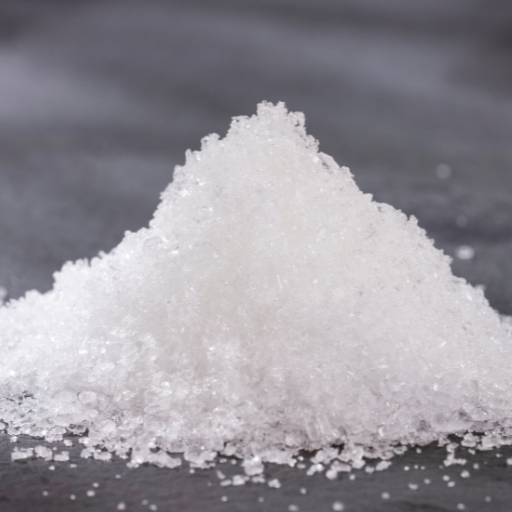
Epsom salt substances, mostly made up of magnesium sulfate, are usually used in agricultural practices to address soil’s low magnesium levels. This is specifically beneficial for crops which require extreme amounts of magnesium like tomatoes, peppers and roses. Nevertheless not all plants benefit from Epsom salt use. Overuse results into nutrient imbalances that can hinder the growth of plants. Thus it is essential to perform a soil test to determine the specific nutrient needs before application. When properly applied, Epsom salt can help improve plant health and yields but should be part of a balanced fertilization strategy tailored to your garden’s unique requirements.
Can Epsom salt help improve soil nutrients?
Yes, Epsom salts can help improve soil nutrients particularly by adding magnessium and sulfur which are two essential nutrients required for plant growth through search engine at the top.
- Better Soil Structure: sulfur is needed by protein synthesis hence epson salts helps in fertility improvement of soils due to its presence while maintaining soil structure and health thus making Magnesium very useful. In this regard, a study conducted by the University of Texas shows that applying Epsom salt improves soil aeration and water drainage.
- Nutrient Absorption: The magnesium in Epsom salt facilitates the absorption of nitrogen (N), phosphorus (P), and potassium (K). According to Clemson University Extension, magnesium is an essential secondary nutrient involved in photosynthesis and chlorophyll production.
- Correcting Deficiencies: Epsom salts are effective in addressing deficiencies arising from a lack of Magnesium, especially if there is a pH imbalance in soils. It is commendable that one follows Wisconsin-Extension’s advice on carrying out a proper soil test to establish exact magnesium levels. Normally, 1-2 tablespoons of Epsom salts mixed with water per plant correct deficiencies without causing other nutrient imbalances.
These technical parameters highlight that while epsomsaltcan be beneficial, its application should be based on precise soil needs to avoid adverse effects.
How does Epsom salt affect plant growth?
The magnesium and sulfur in Epsom salt are responsible for its positive influence on plant growth. Magnesium forms a central part of the chlorophyll molecule, which is essential for photosynthesis. This not only enables efficient absorption of sunlight but also leads to healthier and greener foliage. Additionally, important enzymes and proteins that promote plant development require sulfur for their formation. Hence, gardeners can often observe better nutrient uptake improved seed germination and increased flower production when they use this salt. However, it is important to use it correctly because excess amounts may lead to imbalances in soil and plants.
What are the potential downsides to using Epsom salt?
- Soil Nutrient Imbalance: Overapplying Epsom salts can cause an imbalance of nutrients in soils. High levels of magnesium can block other crucial elements like calcium and potassium, whose availability is critical for proper functioning in plants. According to University of Georgia research, the Antagonist effect is caused by high levels of magnesium, which makes these nutrients less available, leading to deficiencies.
- Soil and Water Pollution: Due to its high solubility, Epsom salts can easily leach into ground water or surface water via runoff processes. When it happens, environmental pollution occurs thus impacting ecosystems around water bodies such as rivers lakes etc. According to Environmental Protection Agency (EPA), elevated levels of sulfur in water might disrupt pH balance affecting aquatic flora and fauna.
- Plant Toxicity: Excessive Epsom salt can be toxic to plants as it causes symptoms like scorching of leaves, yellowing and early falling of leaves. Through too much application of magnesium sulfate, osmotic stress is caused that hampers effective water uptake by the plant (University of Vermont Extension).
- Ineffectiveness in Non-Deficient Soils: Applying Epsom salt to soils where there is no deficiency of magnesium or sulfur may offer no noticeable benefits and could even be detrimental. Regarding this matter, Texas A&M University’s agronomists argue that random use of Epsom salt within a well-balanced soil may amount to unnecessary expenditure devoid of any improvement on plant health and yield.
- Interference with Soil pH: Epsom salts misuse is capable of changing the soil pH, making it either too acidic or alkaline for specific plants. According to research from the University of California Agriculture & Natural Resources, maintaining optimal soil pH is key for nutrient availability as well as general vigor in plants. Consequently, overuse leading to imbalance leads to negative impacts on many plant varieties.
From these possible disadvantages, people can make choices regarding how they apply Epsom salts so that the plants feel its effects without harming them (University of Vermont Extension).
Reference sources
- Gardening Know How
Source: Information About Using Epsom Salts For Plants
- This source recommends misting plants with a solution of 2 tablespoons of Epsom salt per gallon of water once a month, providing a practical guideline for Epsom salt application in gardening.
- The Sage
Source: Epsom Salts for Plants | The Complete Guide
- The Sage suggests a solution of 1-2 tablespoons of Epsom salts per gallon of water for plants, emphasizing the effectiveness of Epsom salt sprays to support plant growth and health.
- SeaSalt.com
Source: Gardening with Epsom Salt For Plants
- SeaSalt.com recommends dissolving two tablespoons of Epsom salt per gallon of water for potted plants, offering a clear and concise instruction for incorporating Epsom salt in plant care routines.
Frequently Asked Questions (FAQs)
Q: How much Epsom salt should I add per gallon of water for garden plants?
A: For garden plants, typically, you would add one tablespoon per gallon of water. This concentration of Epsom salt can help provide plants with necessary magnesium and sulfur.
Q: How often should I water my plants with Epsom salt solution?
A: It is generally recommended to water plants with an Epsom salt solution once a month. This regular use can help provide a steady supply of magnesium and sulfur.
Q: Can Epsom salt benefit all types of plants?
A: Not all plants benefit from Epsom salt. It is most useful for plants that have high magnesium needs, such as tomatoes and peppers. Conducting a soil test can help determine if your plants need extra magnesium and sulfur.
Q: What are the benefits of using Epsom salt in gardening?
A: Epsom salts have been used to improve plant growth by providing magnesium and sulfur. These nutrients help in chlorophyll production and improving nutrient uptake, leading to bushier plants and better blooms.
Q: How do I add Epsom salt to my garden soil?
A: You can either dissolve Epsom salt in water and water it into the soil or directly sprinkle it around the base of your plants and water it in. For direct application, typically 1 tablespoon of Epsom salt per foot of plant height is recommended.
Q: Are there any specific plants that particularly benefit from Epsom salt?
A: Tomatoes, peppers, and roses are examples of plants that particularly benefit from Epsom salt due to their high demand for magnesium. Epsom salt can help enhance nutrient intake and overall plant health for these species.
Q: Will Epsom salt alter my soil’s pH level?
A: Epsom salts do not contain elements that significantly alter soil pH. They primarily provide magnesium and sulfur without affecting the acidity or alkalinity of the soil over time.
Q: How should Epsom salt be used as a fertilizer supplement?
A: Epsom salt can be used as a fertilizer supplement by mixing it with water and applying it to the soil or plants. Typically, you would use 1 tablespoon of Epsom salt per gallon of water to provide an effective nutrient boost.
Q: Is it possible to overuse Epsom salt on my plants?
A: Yes, it is possible to overuse Epsom salt. Excess magnesium can lead to imbalances in the soil, affecting the uptake of other essential nutrients like calcium and nitrogen. Always follow recommended dosages and conduct a soil test if unsure.
Q: Can Epsom salt be used for indoor plants as well?
A: Yes, Epsom salt can also be used for indoor plants. Dilute 1 teaspoon of Epsom salt per gallon of water for indoor plants and use the solution monthly to supplement magnesium and sulfur.






